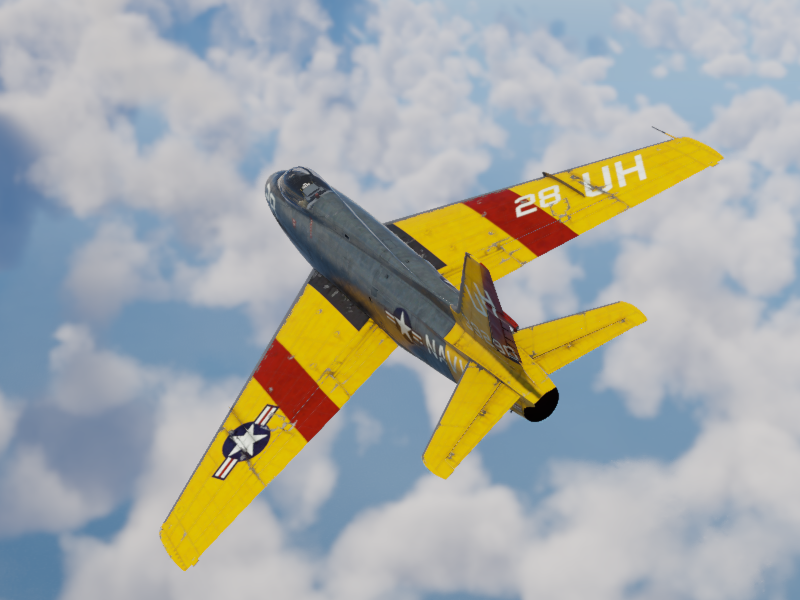
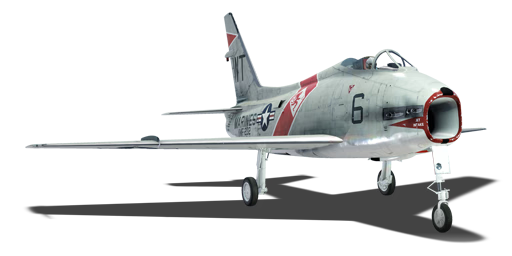
The VMF-232 squadron of the Marine Corps, nicknamed "Red Devils", was known for using the FJ-4B in the 1950s, specifically between 1956 and 1959, after gathering experience with the FJ-2 and FJ-3. The squadron and their FJ-4Bs were deployed on USS Bennington during the Quemoy Matsu Crisis in 1958, and later transferred to Naval Air Facility Atsugi. In 1958, the squadron flew more than 10,000 hours. After their deployment ended, VMF-232's FJ-4Bs started to be replaced by the introduction of the first batch of F-8 Crusaders.
It was introduced in Update 1.79 "Project X" as the main reward for the Good Old S.U.M.M.E.R event 2018. The FJ-4B VMF-232 is a solid multi-role US Marine aircraft which can fight air-to-air combat, ground-pound, or both. The fighter features four 20 mm autocannons and then can outfit several different ordnance to its underwing stores. Bomb load-outs range from using 250, 500, 1,000 or 2,000 lb bombs effectively targeting from vehicles and pillboxes all the way up to bases. FFAR Mighty Mouse rockets make short work of ground targets, but also can be deadly against any of the bomber aircraft it may intercept. Bullpup rockets can create a huge punch into a ground target, however, it requires the attention of the pilot all the way to the target to ensure it hits. The FJ-4B VMF-232 can also sport four AIM-9B Sidewinder missiles, which any smart pilot on the receiving end will immediately begin evasive manoeuvres when one of these are inbound because, at that point, nothing else matters!
flaps
flaps
flaps
brake
| Belt | Belt filling | Armor penetration (mm) at a distance: | |||||
|---|---|---|---|---|---|---|---|
| 10 m | 100 m | 500 m | 1000 m | 1500 m | 2000 m | ||
| AP-T/HEI/HEI | 42 | 39 | 27 | 18 | 11 | 7 | |
| AP-T/HEI | 42 | 39 | 27 | 18 | 11 | 7 | |
| AP-T/HEI/AP-I/HEI | 42 | 39 | 27 | 18 | 11 | 7 | |
| AP-T/AP-T/HEI/AP-I | 42 | 39 | 27 | 18 | 11 | 7 | |
| AP-I/HEI/HEI/HEI | 42 | 39 | 27 | 18 | 11 | 7 | |
| Name | Weight | Slot | ||||||
|---|---|---|---|---|---|---|---|---|
| 72.6 kg |  |  |  |  | ||||
| 19 × | 233.7 kg |  |  |  |  |  |  | |
| 4 × | 280.3 kg | 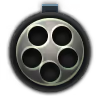 |  |  |  |  |  | |
| 259 kg | 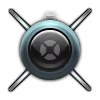 |  |  |  |  | |||
| 117.9 kg |  |  |  |  |  |  | ||
| 240.9 kg |  |  |  |  |  |  | ||
| 446.8 kg |  |  | ||||||
| 893.6 kg | 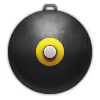 |  | ||||||
| Targeting pod | 20 kg |  | ||||||












Flight performance | |
|---|---|
Survivability |
|---|
Weaponry | ||
|---|---|---|
